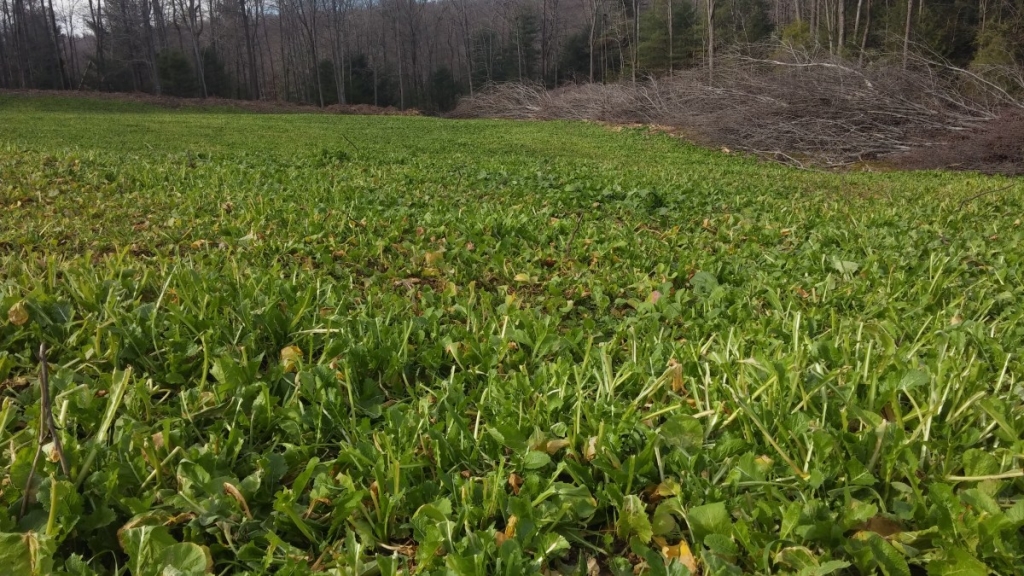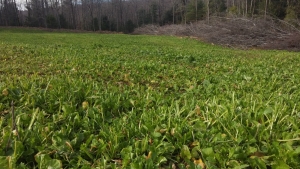You want to have a food plot on your land but it doesn’t have any open ground or fields. Where do you start?
First of all, your land is not farmland for a reason – nobody cleared it to farm because it wasn’t suitable for farming. The early settlers where adept at locating soil that would grow crops or feed livestock and they cleared all the good stuff, leaving the marginal land with poor soil, too much rock, too steep to the woods.
However, we can usually find small areas where there are the right conditions, or close to it, and fix it so we can grow forage.
The first step is to take a look at an old USGS map. Most were drawn in the 60s and show open ground in white so that one can easily see ground that was clear or fallow at that time. If there is, this is where you want your plot. Another method is to look up your property on the Soilmap website run by the NRCS. You can map your soils and get a general idea of what your are dealing with. This site will provide you with some information on the characteristics of the soils found there. What your are looking for is a silt loam, channery (stony) silt loam, Andover class, etc. Just eliminate the very stony, or rubble descriptions.
Armed with your soils map, take a shovel and go find where the vegetation is growing well in the understory, whether it is ferns, invasive brush, tree regeneration. Dig around and see what the profile looks like. If there is a good layer of nice brown soil in the A horizon and not a lot of large stones, and good moisture, it should be the location of your food plot.
Next, you need to find a contractor to clear the area. Land clearing is expensive so you will want to incorporate a timber sale into the deal. The logger has to clear at least a landing, so it is not much more work once the equipment is there to make a big landing that will be your food plot, or in the case of this project, I traded the timber for the land work.
It is extremely important to find a contractor who understands what you want in terms of leaving the little bit of topsoil, rock and stump removal, material removal from the site, etc. Just dropping a dozer blade and scraping off a forest opening is not a food plot clearing. You will just make a big mess and move all the topsoil off site.
Once the area is cleared and stumps removed and the plot is leveled up with a dozer, preferably with a rood rake, its time to pick rocks. This can be done by hand or with rock hound equipment or both. I use a spring tooth harrow to bring stones to the surface and pick them by hand. A Harley Rake or Rockhound on a skidsteer can be used for finish work if you want it real nice.
Take soil samples and see what you need for amendments. Recently, I have been able to get truckloads of lime and chicken manure, then add fertilizer according to what I need for the chosen plants and to supplement the manure.
Incorporate this material and continue picking rock.
I like to use a rototiller to prepare a good seedbed then plant with a Brillion seeder which has two cultipacker sets on it to make a perfect seedbed.
One last thing I must mention is this: Do it right, commit to finishing it properly or don’t even start. I see half-assed food plot attempts all the time. Don’t think you can get away cheap by hiring a dozer guy for day and throwing some seeds around. It won’t work and your money will be wasted.
Here is a link to a video I posted on my Youtube channel that will take you through the entire process and show you the results.
Here is a photo of the brassicas in November after a few frosty nights. The deer are hammering the plot:



Id just like to tell you how much I learnt from reading wisdom Bookmarked u.Hope to be back again for some more good articles